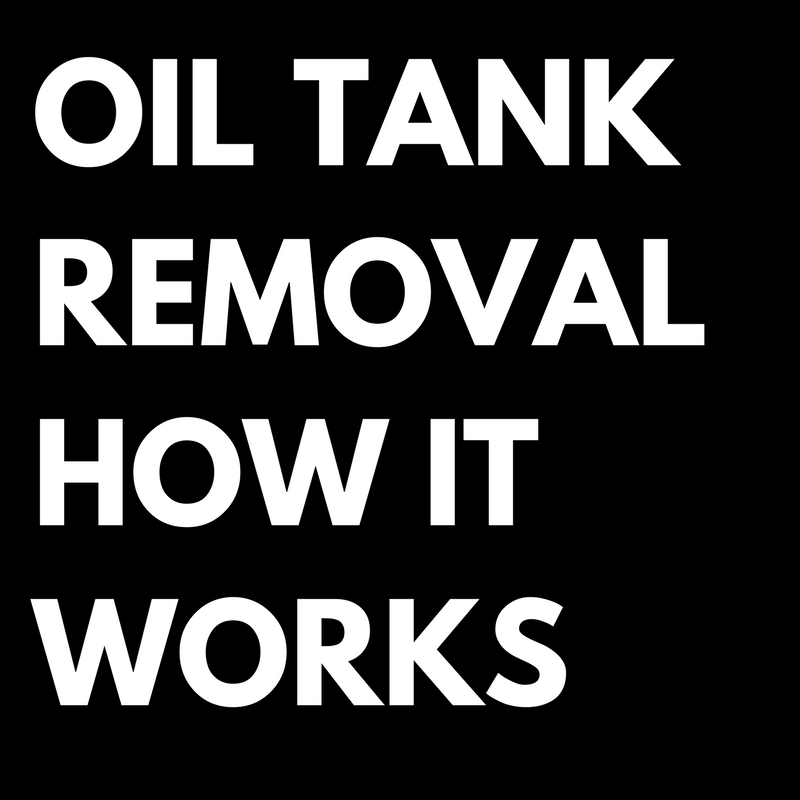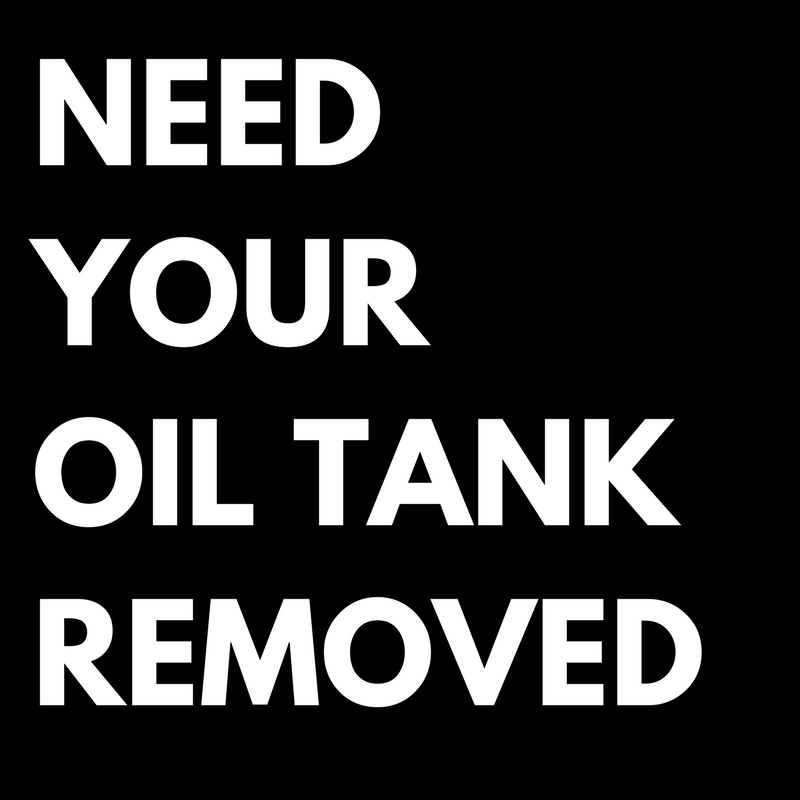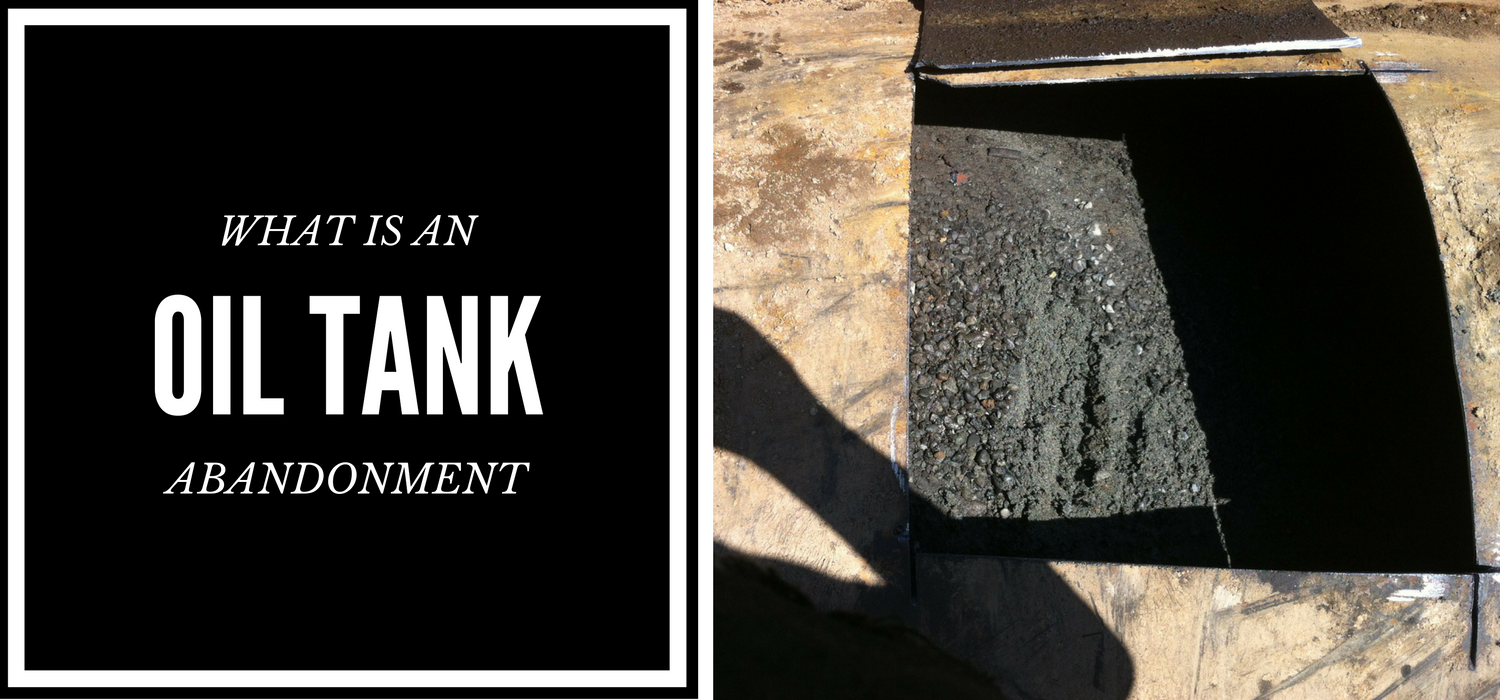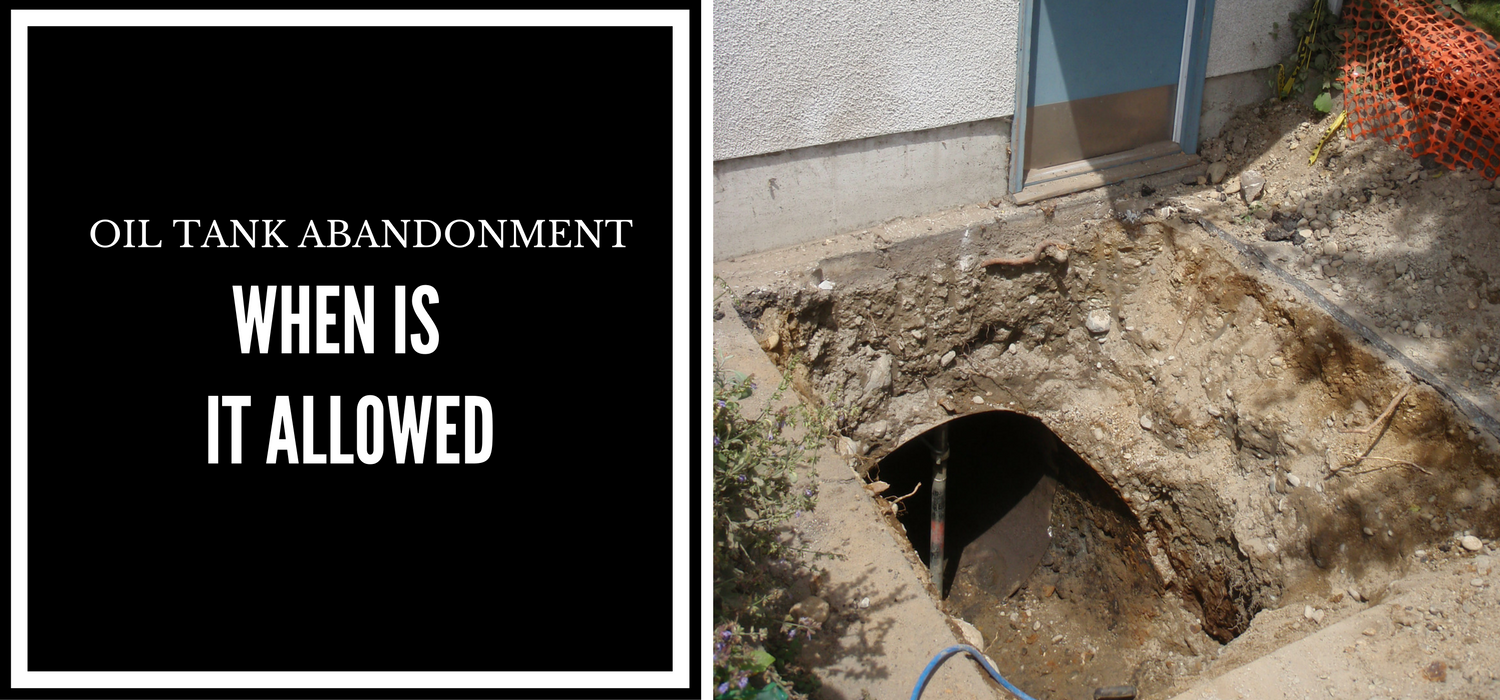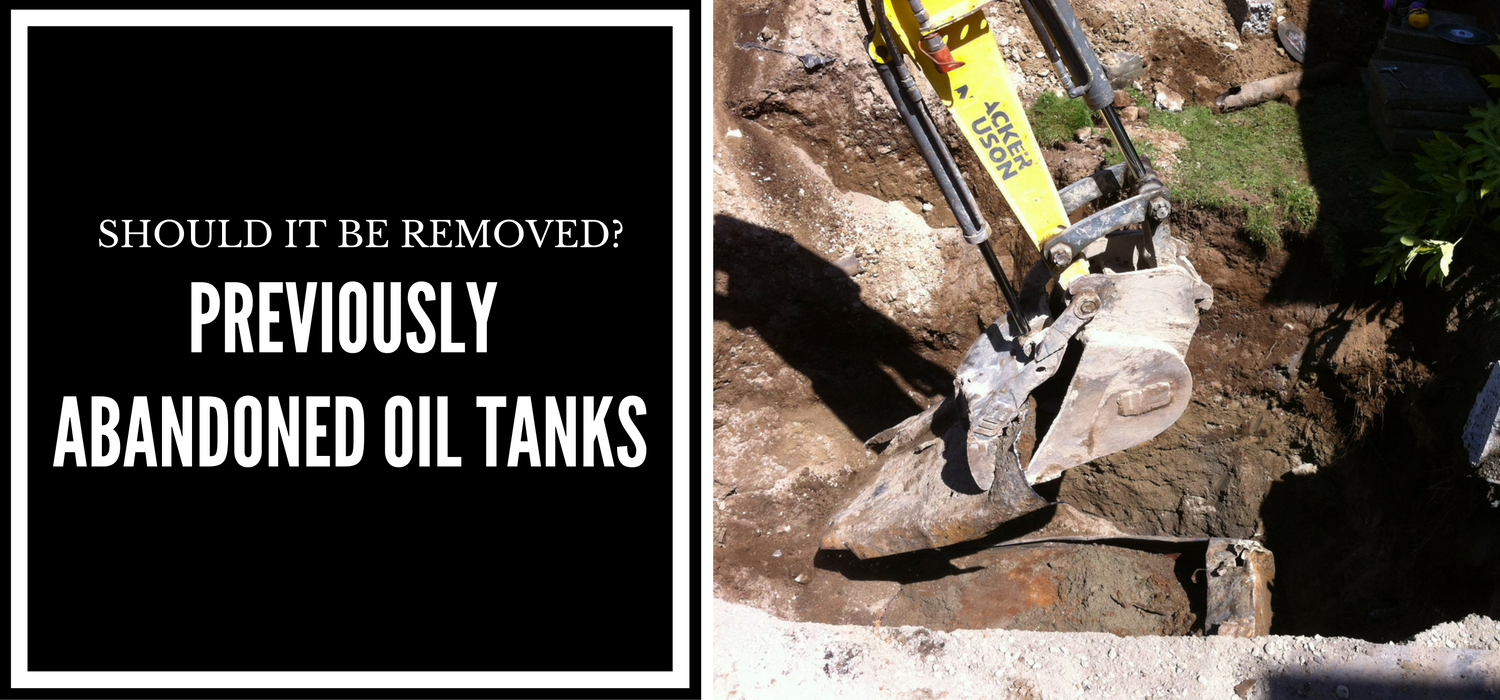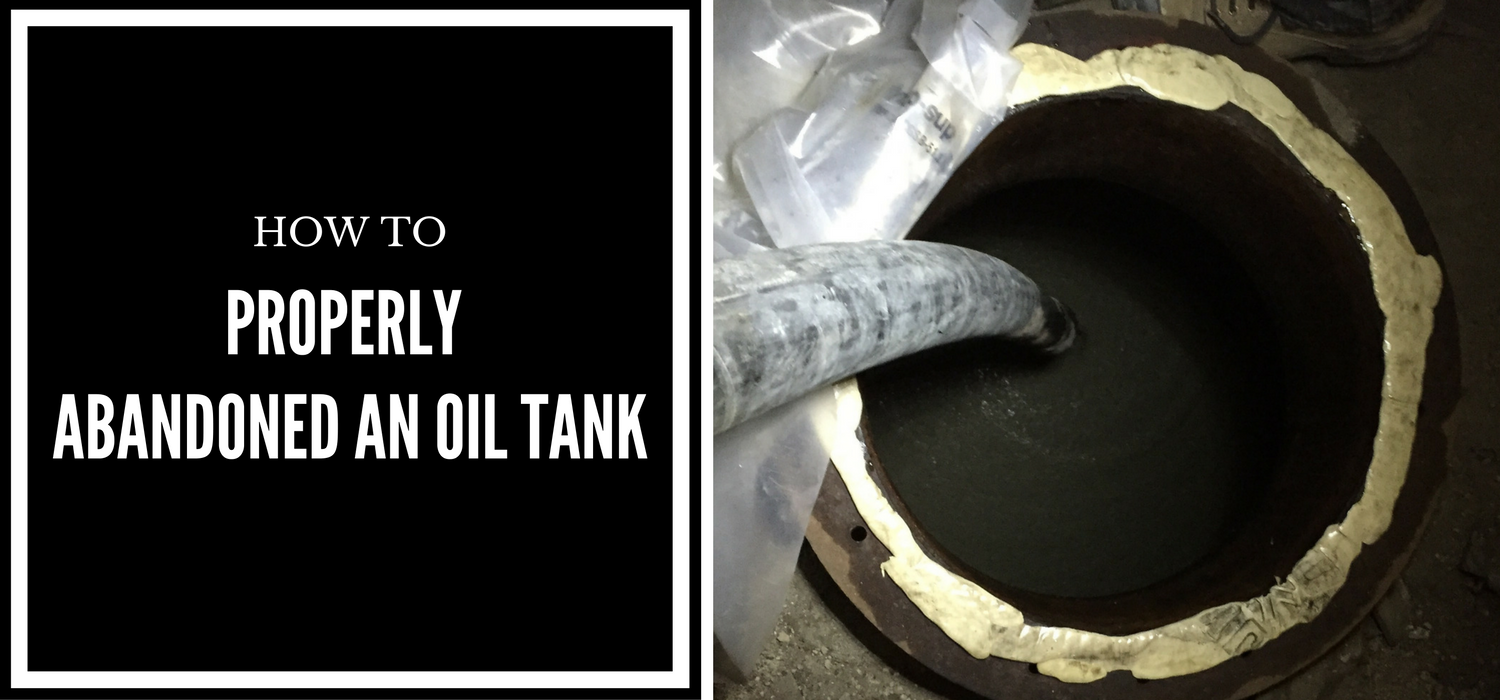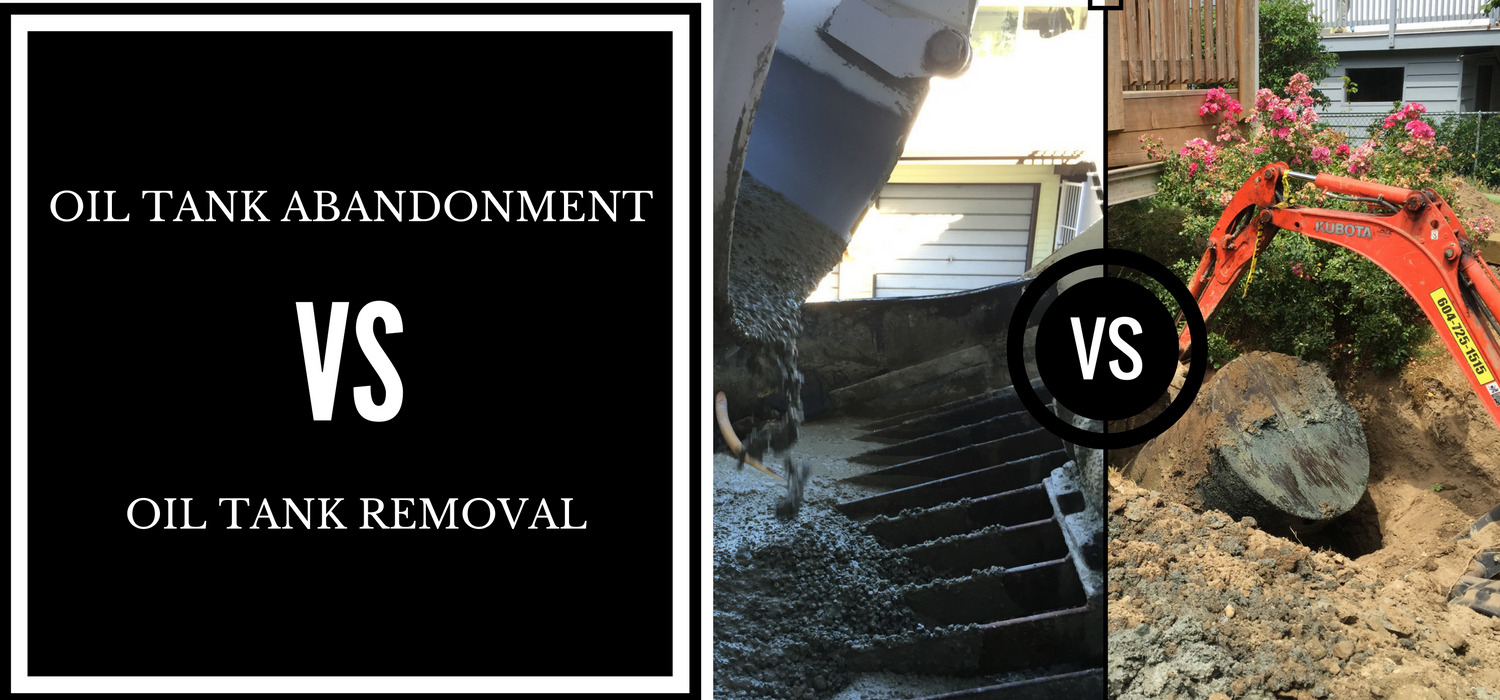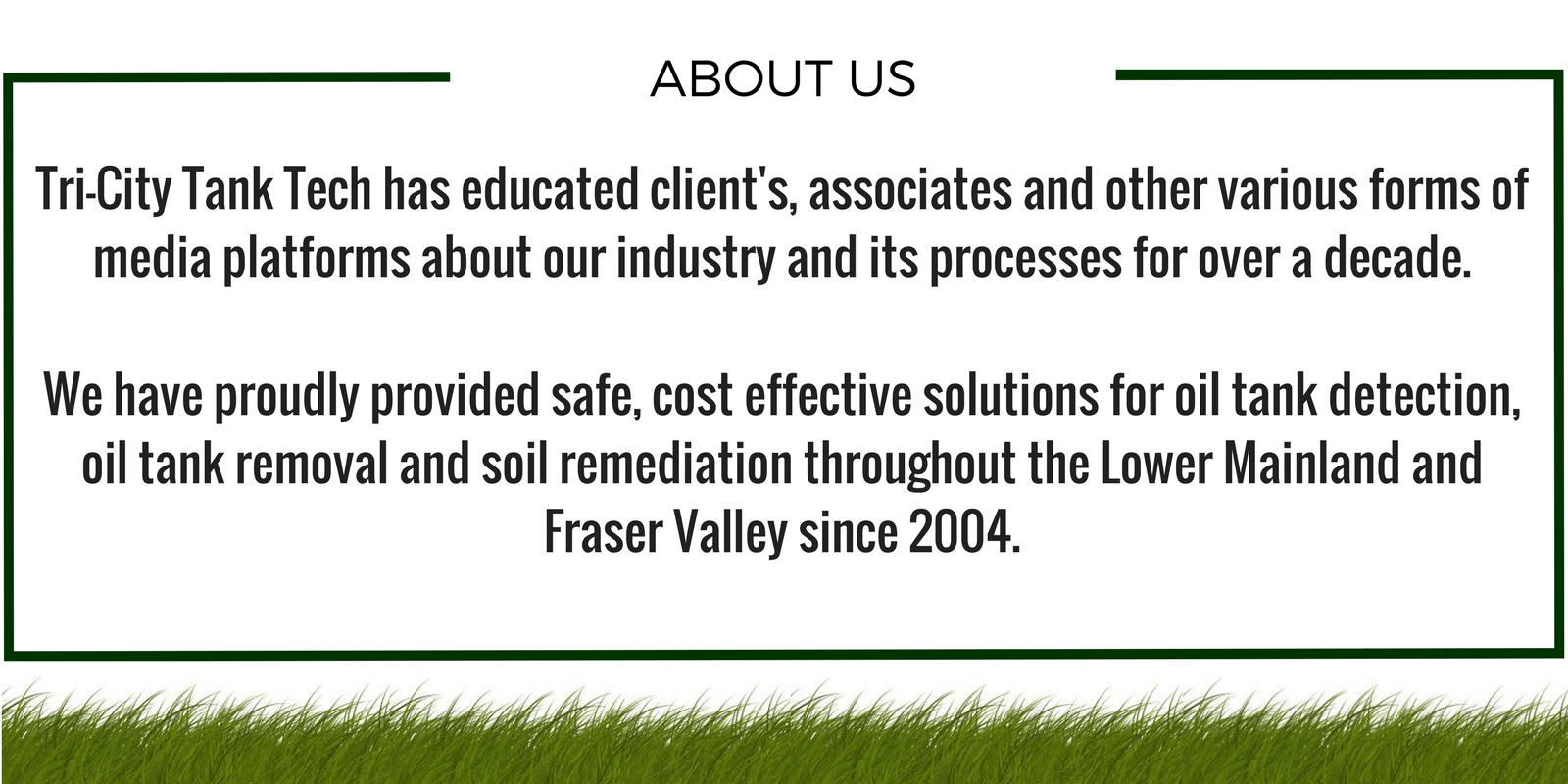Over the years we have received many calls regarding the subject of oil tank abandonment vs oil tank removals.
The most common inquiries are usually from property owners who want to know if they can abandon their oil tank or if they have to remove a previously abandoned oil tank.
All Cities have different rules and regulations surrounding how to manage your oil tank; however, hopefully this article can help you understand the process better to help you make an educated decision.
Before you decide if you are going to abandon, or remove your previously abandoned oil tank, it would be helpful to understand what an oil tank abandonment is, why oil tanks were abandoned and when it is acceptable to abandon your oil tank.
WHY CHOOSE US
FIND OUT WHY TRI CITY TANK TECH IS THE PREFERRED CHOICE OF REALTORS, BANKS, HOME INSPECTORS AND MORE...TRI CITY TANK TECH | YOUR OIL TANK REMOVAL EXPERT
- COMPETITVE PRICING
- FREE QUOTES
- QUICK RESPONSE TIMES
- KNOWLEDGABLE STAFF
- EXPERIENCED
- HIGH QUALITY EQUIPMENT
- QUALITY SERVICE
- A+ BBB
- INSURANCE COVERAGE
- WORKSAFE COVERAGE
What Is An Oil Tank Abandonment
In the past, some municipalities recommended that property owners abandonded (decommissioned) their oil tanks to avoid future issues;however, often these recommendations were not enforced, regulated and/or properly documented.
Before approximately 1995 there were not many rules or regulations pertianing to oil tank removals and oil tank abandonments.
This is one reason that many cities do not have accurate records of previous oil tank installations, oil tank removals and oil tank abandonments.
The main objectives of oil tank abandonment (oil tank decomissioning)
- To properly discontinue your oil tanks service
- To properly empty and clean out your oil tank
- To ensure the structurally stability of your oil tank and the surrounding structures by filling your oil tank with a structural fill
- To remove the risk of future soil contamination, remove accessible soil contamination and/or to document any inaccessible soil contamination that remains on your property
Oil Tank Abandonment:
Common Reasons for Oil Tanks Abandonment
The most commons reasons for an oil tank abandonment are, for example, but not limited to:
- To eliminate the risk of your oil tank leaking or mitigating the environmental impact.
- To eliminate the risk of fire hazards
- To eliminate the potential of sinkholes/structural issues in the area
Oil Tank Abandonment:
When is it allowed
If you can remove your oil tank without impacting the surrounding structures, most cities will require that you remove your oil tank.
If your oil tank is located partially or fully under a structure, most times the city will allow your oil tank to be abandoned or partially abandoned.
Important note: Even if your city approves your oil tank to be abandonment, it is important to understand that other outside parties may have their own preferences pertaining to your oil tank abandonment, for example, but not limited to:
- Insurance companies
- Mortgage companies and banks
- Prospective future purchasers of your property
If you are abandoning your oil tank (especially if it is not being abandoned due to structural issues) and you are in the middle of a property, insurance or mortgage transaction, you may want to confirm that all of the parties involved approve that your oil tank will be abandoned.
Even if you follow the correct procedures and have all the proper documentation, you may run into issues if one of the involved parties do not approve that an abandonded oil tank will remain on your property.
If you abandon your oil tank for reasons other than structural issues, an involved party may not agree to leaving an abandoned oil tank on your property.
This could end up costing you more money because even though you have just paid to decommission your oil tank, you may now also have to pay to get that same oil tank removed.
Abandoned Oil Tanks:
Do They Need To Be Removed
Many years ago when home owners or their contractors pro-actively abandoned their oil tanks, there were not many rules or regulations in place.
Furthermore, even if your city had a set of rules and regulations surrounding oil tank abandonments, many times the process was not done properly, and there is no supporting documentation.
There are 3 main reasons that you may have to remove your previously abandoned oil tank:
Improper Documentation
Frequently we find that when an oil tank is previously abandoned, there is little or no supporting documentation that confirms the project was completed properly.
Improper Sampling
Many times we find that the proper samples or even no samples were taken during previous oil tank abandonments.
At the time, if the proper samples were not taken, there is no way to properly assess if your oil has leaked into the surrounding soil.
This can be a problem because the main issue regarding oil tanks is the environmental risk that they can potentially pose.
Improper Procedures
Many times because regulations were not enforced, monitored, and/or even existed, home owners or contractors did not always follow the proper steps when abandoning oil tanks.
To properly decommission an oil tank, it should have been cleaned properly, and filled completely to help ensure the safety of any surrounding structures.
We find that a lot of times oil tanks were not cleaned properly during previous oil tank abandonments.
This can be an issue because if fuel oil remained in the oil tank, there is still a risk that the oil may have leaked into the surrounding soils.
Additionally, if there are any structures in the area and the oil tank was not filled completely you may have future structual issues if your oil tank collapses.
In the oil tank removal industry, every city has different rules and regulations regarding how an oil tank should be dealt with.
Most times, unless removing your oil tank compromises a near by structure, a majority of cities will still want you to remove your oil tank.
Before you start the oil tank abandonment process, you should confirm that your oil tank meets the abandonment requirements for your municipality.
Oil Tank Abandonment:
How To Properly Abandon An Oil Tank
Every property is unique, so your individual situation may vary depending on the location of your oil tank.
Step 1 – Geotechnical Or Structural Engineer Assessment
If your oil tank is within close proximity to a structure, then a geotechnical or structural engineer should perform a site assessment before the oil tank abandonment process starts.
The Geo Technical report should include:
- Their approval/recommendation that your oil tank should be partially or fully abandoned in place.
- Their report should outline and approve the necessary steps to be taken to help ensure that there are no future structural or sinkage issues.
Step 2 – Permit Application
We will apply for your oil tank abandonment permit. At this point, we will set up an inspection if your city requires it.
Step 3 – Expose Your Oil Tank
If your oil tank is accessible and it is possible to expose a portion of your oil tank. We will then safely expose a portion of your oil tank to prepare it to be properly cleaned.
Step 4 – Properly Clean Out Your Oil Tank
We will then safely cut access points in your oil tank allowing us to properly pump and clean out the inside of your oil tank.
This is an important step because it removes the potential risk of future contamination.
Step 5 – Properly Purge, Remove, Cap: Visible Oil Tank Pipes
We will then remove and/or cap your vent pipe and filler pipe (if present). Additionally, we will purge, cut and crimp the feeder lines to your oil tank if they are accessible.
Step 6 – Inspections
If an inspection was required by your city, Tri City Tank Tech will pre-book an appointment for inspection.
This is an important step because if the city does not have a chance to inspect your oil tank, you may face issues in the future.
Additonally, the geo technical or structural engineer may want to be on your property at this point or during step 8 to ensure that all requirments are met.
Step 7 – Soil Sampling
An environmental consultant takes the appropriate samples.
Step 8 – Filling Your Oil Tank
Your oil tank is then filled properly to help prevent any future structural or sinkage issues
Step 9 – Soil Remediation
If it is necessary and possible, the accessible contaminated soil on the property should be removed.
If any contaminated soils are inaccessible, the environmental consultant will document if any contamination will remain on your property and may implement a management strategy for the remaining contamination.
Step 10 – Final Report
Once your oil tank abandonment project is completed, we will provide you and the appropriate governing bodies with your final oil tank abandonment report.
This report is included in our initial cost and also includes pictures of the process, and supporting documentation.
Separately, you will also receive an environmental report from the environmental consultant and your geo technical engineers final report.
Your final reports are an important part of the oil tank abandonment process, as they document that the oil tank abandonment was done properly.
We recommend that you keep all three reports together, so if any outside parties such as, but not limited to: potential buyers, lenders or insurance companies request this information, you will have the reports readily available
Oil Tank Abandonment VS Oil Tank Removal
Depending on your situation an oil tank abandonment can have some advantages, although if it is an option, removing your oil tank is typically the best solution.
Oil Tank Abandonment:
Advantages
Potentially Faster…
Usually, when an oil tank abandonment is approved it is because the removal of the oil tank may compromise the integrity of a nearby structure.
Keeping this in mind, if your oil tank cannot be removed safely, it is unlikely that it will be possible to remove much soil contamination in the area, which can save time.
Additionally, waiting on the samples results can be the longest part of the oil tank removal process. The standard turnaround time on sample results is usually approximately 5-7 business days.
If it was a regular oil tank removal you would have to wait for these sample results before you can determine the next step in the project.
However, if we cannot remove any soil contamination due to structual issues, we can potentially complete the project in one day.
This is because we are not waiting on the sample results to determine the next step in the project.
Potential cost savings…
If there is soil contamination present and you cannot remove the contaminated soil because there is too much risk involved, you may save money in the present on soil remediation costs.
Important note: Keep in mind that when you decide to sell your house, there is an increased risk that the buyer may request a price reduction if any soil contamination still exists on your property.
Therefore, it is hard to say in this scenario that you will truly end up saving money in the long run.
Oil Tank Abandonment:
Disadvantages
The oil tank is still on the property…
Even if you have abandoned an oil tank for all the right reasons, knowing that an oil tank is still on the property can cause some anxiety for future purchasers of your property.
If your oil tank was abandoned due to potential structural issues and the process was completed and documented correctly, most times this will help ease their anxieties.
Important reminder
Certain outside parties such as banks or insurance companies may have their own set of rules regarding your oil tank.
To help avoid any future issues, it is very important that if you are currently in the middle of a transaction, all parties that are involved in this transaction approve the oil tank abandonment before you make your final decision.
Some examples of transactions that could include mulitple parties approval could be:
- During a property transaction
- During a mortgage application or renewal
- During a insurance application or renewal
Some contaminated soils may still remain on the property…
If you still have inaccessible contamination on your property, it may cause some issues with prospective home buyers, insurance companies, or lenders etc.
However, many times a solution that works for all parties can be found.
Additional costs…
When abandoning an oil tank it can cost more than a standard oil tank removal for a couple reasons:
- Due to the independent geotechnical engineers added cost
- Poor accessibility and location of your oil tank, can translate to specialized equipment or additional man hours
- Filling your oil tank with structural fill is an additional charge that costs more than backfilling a standard oil tank removal excavation with sand
Oil Tank Removal: Advantages
If your oil tank removal can be completed safely and without effecting surrounding structures, we feel that an oil tank removal is the best solution in most situations.
There are 2 main advantages to removing your oil tank vs abandoning your oil tank, such as, but not limited to:
No more oil tank…
I know this sounds obvious but it had to be said. It is a lot easier to explain that your oil tank has been removed, than it is to explain that your oil tank has been abandoned.
Cost…
A standard oil tank removal is usually quite cheaper than an oil tank abandonment because there are not as many costs involved, for example: geo technical engineers, specialized backfill materials etc.
Important Note: All cities have different rules and regulations regarding oil tank removals and oil tank abandonments. The purpose of this article is to help you gain a better general understanding what is involved in an oil tank abandonment.




